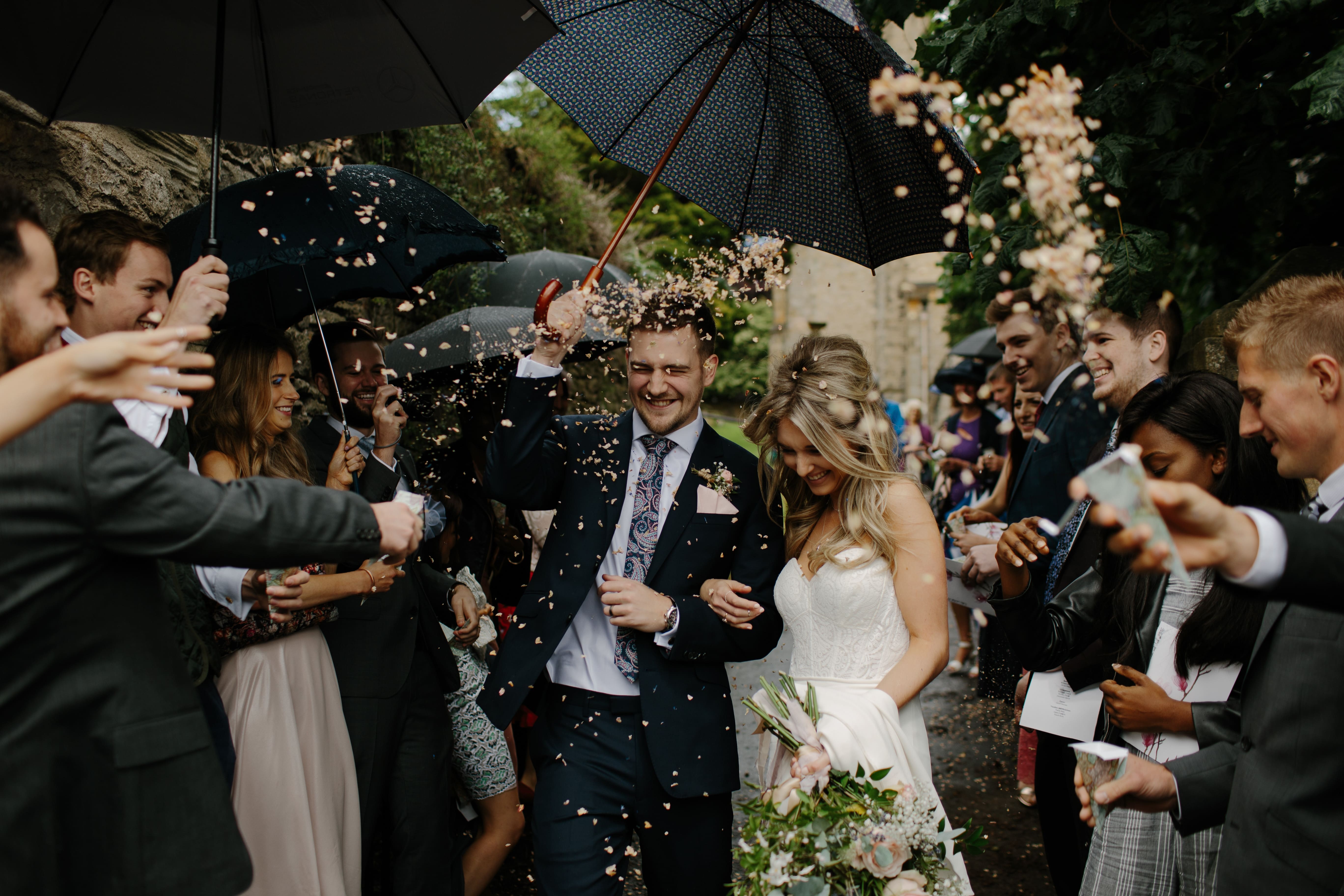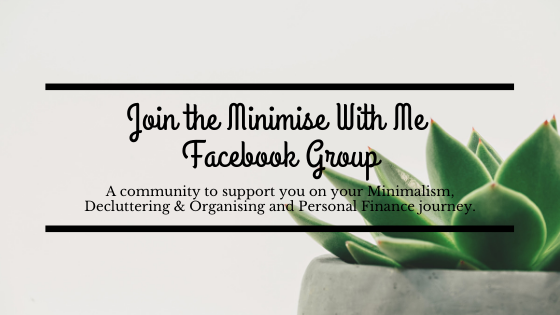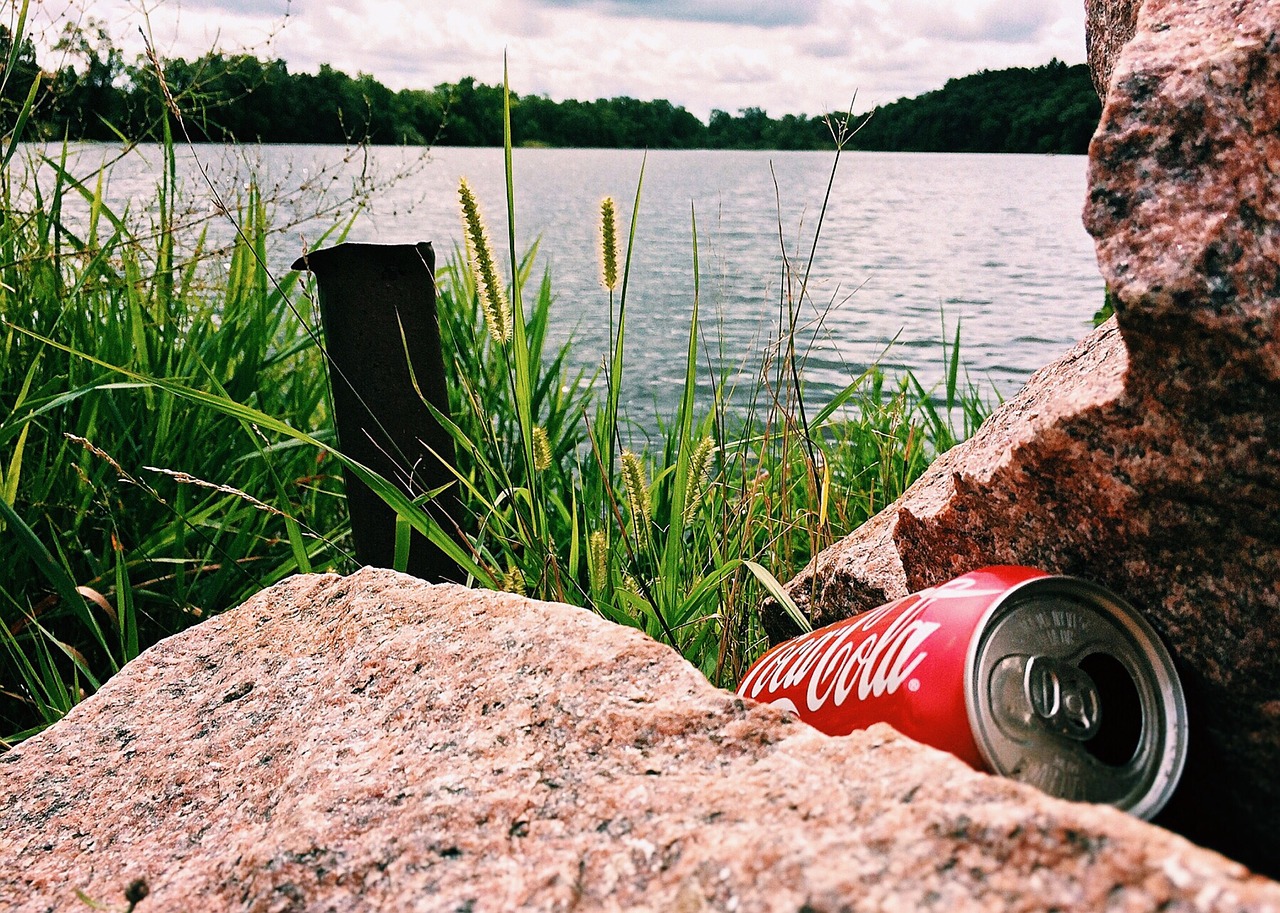You’re newly engaged and starting to make plans for your upcoming wedding. What an exciting time! The sad reality is that weddings are expensive. Most likely, more than you imagine they cost. Soon enough you hear through the distant bells chiming and realise that this is going to take some financial juggling and severe budget savvy-ness. But there is a way to plan for a debt free wedding and avoid any financial hangovers with a little forward thinking!I remember about a week after getting engaged to my now husband, I was asking my friend who was planning his wedding at the time, how much things are going to cost. He told me his entire budget was nearing the $30k mark. I began sinking in my chair. How on Earth could one day cost $30k?! Sure enough we soon realised that figure was pretty realistic for an average wedding.Money Smart’s 2014 report on wedding costs estimates an average Australian wedding will set you back $36,200, that’s closer to $40,000 in 2017 with 3% inflation. Soon enough my naive, newly engaged hopeful eyes were opened to the financial realities of planning a wedding.
I certainly felt a tad unsure and concerned at this point. I’ve always loved working on budgets, but this was a whole new world of financial challenges. My husband (to be) and I knew we were going to be paying for our wedding ourselves as our parents weren’t in a position to help out too significantly financially. Going into debt wasn’t an option in our minds and didn’t align with our values of avoiding debt (and certainly not for non-asset purchases!).
I had heard of people trying to pay off their wedding debt post the big day and I didn’t that to be us. I was determined to find a way to have a debt free wedding, our perfect day to remember for years to come, without the debt to remind us!
We got engaged in January and set the date for September the following year which gave us 19 months to save. Let me tell you we needed all 19 of those months and every spare dollar!
The good news is that we managed to pay it all in cash. Completely Debt Free! And you can too! And a debt free wedding is still possible even if you don’t have a long engagement to save like we did.
Read below for How We Planned a Debt Free Wedding.
SAVING FOR THE BIG DAY
If you aren’t saving now then you need to start today! Remit Sethi, author of I Will Teach You to Be Rich goes even further by suggesting that people who plan to get married one day and looking at a $28000 average wedding cost should each save about $3,000 per year, or $250 a month from when you turn 21. At 21 I was certainly not thinking about saving for a wedding but in hindsight, even a small amount each week would have helped out a lot when I got married at 27.
If you have left saving for a wedding until the engagement, you will need to work out what your expenses are in a month and what you can afford to save towards the wedding. This will need to go into a separate wedding savings account.
Determined to plan a debt free wedding, for 19 months, all of our non-wedding spending was on hold. Not off indefinitely by any means! We still went out occasionally for our sanity, but there were no holidays, shopping sprees, non-urgent home repairs, new cars, new TVs, new clothes (other than things we needed of course). All spending came to a halt and every spare dollar we could find from savings – pay rises, bonuses anything we could think of, went to the wedding savings fund to fund our debt free wedding goals. I remember in that entire 19 months we took one 3 days weekend trip up the coast and that was it which wasn’t easy for two lovers of travel. But looking back, it was worth the struggle.
FINDING EXTRA CASH
Consider ways that you can bring some extra cash to help boost your savings and help you achieve your debt free wedding.
- Do you have unwanted clothes or clutter that you could sell? This can bring in some fast easy cash and clear up some of your crap.
- Can you pick up some overtime at work?
- Can you do a side hustle if you have the time. Drive for uber, sell your arts, crafts, or designs. Advertise some work to do locally like gardening.
- Save any pay raises instead of adding them into your spending budget.
- Reduce your eating out budget and cook at home more often.
- Change expensive nights out at bars with friends to dinner parties at home.
- Shop your wardrobe instead of going out shopping and spending unnessessarily.
YOUR DEBT FREE WEDDING BUDGET
Before you spend any money on anything and ensure you can plan the entire wedding debt free, start by preparing a budget of all the wedding expenses. Refer to this one below for an idea (this is read only, save a copy on your drive to edit).
Include all clothing, jewellery, accommodation, cars etc. Work out a rough budget and talk with your wife or husband to be about what are the most important things to you both.
You can research online or ask a friend who got married recently for an estimate of pricing for different expenses. Some suppliers advertise their prices online which is a good place to start, others you can get a quote after a quick email. Plot out the budget estimates into your wedding budget as a starting point. As you fill in more accurate number you will see whether you are in or over budget and you can adjust it from there. The more expenses you add in the better. Don’t forget all the little things; postage, flutes, gifts for the bridal party and so on.
Updating your budget regularly is the key to planning a debt free wedding so you can ensure you haven’t left anything out. Record every expense as soon as you can after receiving the invoice. Forgetting to enter a cost into your budget can cause you to have budget blow outs or lose your reservation when it is left unpaid. As soon as you get the email or receipt put it somewhere safe and enter it into your budget!
HOW MUCH WILL I NEED TO SAVE?
Once you have a ball park of all the expenses work out how much you will need to save each month up until the day. If you are budgeting $20k for a wedding in 12 months you need to be saving $1667 a month for the wedding. Once you have your figure you will need to decide can we afford to save this month each month. If not you can either push back the wedding day or cut expenditure so you can put more money away to meet the required saving amount.
Don’t leave this too late when your wedding is a couple of months away, and everyone has booked their flights and accommodation and you have to go into debt to pay the difference. It’s really important to get this figure and save the required amount from the get go.
HOW TO SAVE ON WEDDING COSTS
These are the things I did in order to save as much money as possible for our wedding. I do not what to think of what we would have paid had I not taken the time and effort to research multiple suppliers and get the best deals we could. We did a lot of the below tips and friends and family have saved on their weddings with others.
- Get multiple quotes
For practically every wedding expense I got 3 quotes, sometimes more. This was no easy feat and time consuming but is going to be a huge help to your budget and potentially save you thousands!
Quotes can range significantly and getting three or four can usually give you a ball park of what is at the budget end and what isn’t. This is a must particularly for big ticket items like the venue, cars and photographers. I looked into at least 10 reception venue’s and prepared a spreadsheet of the inclusions they offered and compared the prices to inclusions which ranged from $90 to $150 per person. When you multiply a saving of $60 by 50 guests or more the savings add up quickly!
Be aware that cheapest is not always best. I didn’t go with the cheapest videographer I found because the quality of work was no where near that of the more expensive supplier. Sometimes it is worth paying more on a professional than throwing away half the money on something inferior.
2. Pick a date further out to give you more time to save and bargain hunt
The longer your engagement the longer you can save. If you want all the bells and whistles of your dream wedding in six months time you are going to find saving up in time a complete struggle. picking a date further out gives you more time to save and bargain shop!
Once you have worked out all your wedding expenses budget, work out how much you need to save and what you can save each month as early as possible. If you can’t afford to save enough you are going to have to tighten those purse strings. It is not going to be easy but will be worth it to know you can enjoy your day and not have to worry about any debt afterwards.
3. DIY as much as you can
Skip the extras that you can do yourself like printing names on the invitation envelopes- pen will do just fine, bow tying etc and invite some close friends over for a night of crafts. These little expenses can add up when they a multiplied for each guest. I saved myself $5 per RSVP card plus postage by just requesting a text message RSVP instead of ordering cards. If you are going to do this you need to update your RSVP list regularly.
4. Work out what are your must have items
For us it was the stuff that we would look back on for years the photography, the rings, the wedding album. This is where we spend on quality. For everything else that is less important and you are willing to save on, this is where you need to find your savings.
We opted to only have flowers for the bride and bridesmaids bouquets and didn’t bother with any others other than some orchids for the reception centerpieces. Besides, our wedding was in a garden we didn’t need any extra flowers 😉 If you can buy flowers from the local market the day before or ask a friend or family to help out on the day. This alone can save you hundreds. I know some brides who have done this and the bouquets are just as lovely (and not so heavy which is a bonus ladies!).
We skipped the fancy ceremony set up and just opted for some chairs and a carpet. We could have spent big on an archway and aisle liners, and flowers for the aisle chairs but decided that the garden and water features were beautiful enough without all that excess stuff.
5. Ask around for any friends or family that can help you out
We are musicians so are fortunate to have many musicians as friends. A friend played harp at our ceremony and my husbands band did an acoustic cover of a song for entertainment at the reception. Do you know anyone that can make your cake, or do your hair or make-up for a discounted rate or in place of a gift?
Did anyone have a wedding recently that would be willing to lend you their decorations or know of any great supplier offers? Save where you can. I got my flowers delivered to my brothers house so we could save $50 on long-distance delivery. Any small help goes a long way!
This also goes for the venue. Ask your reception what vases and decorations they can provide to save you buying them.
6. Consider buying the dress second hand or off the rack
Shop around for the dress, aim for the perfect dress that you won’t have to go into debt for. On my wedding dress shopping day I saw other brides trying on expensive dresses with their mums looking like they were starting to sweat. If a $5000 dress is completely out of the budget don’t even try it on, you are asking for pain! Stick to your budget!
A great time to shop is at EOY sales around June 30. I bought mine off the rack with a 50% discount saving me over $1000.
Check out pre-loved wedding treasures facebook groups or eBay for second hand dresses to save!
7. Shop around for wedding dress alterations
These can range significantly and cost upwards of $500 very quickly. My first quote from the store I bought my dress from was for $500 not including what I ended up getting done. Get at least three quotes here! By doing this I managed to save hundreds of dollars by going to a local alteration place that specialised in formal and wedding dresses which worked out much more convenient travel-wise.
8. Opt for a smaller cake.
A friend was kind enough to give us this advice after his own wedding when he was left with half a cake – a very expensive one at that. We opted for a two tier cake and still had about half left over from 80 guests. Even after giving a lot away to family a lot ended up in the bin (Shock horror but it sat taking up space we didn’t have in our freezer for a few months and after agreeing we were not cake people we just wanted it gone).
If you are having wedding cake, if your venue allows it consider skipping the dessert to save some extra cash. We paid for both and most people only had one or the other.
9. Consider skipping the DJ and MC
If a DJ and MC aren’t included in your package consider asking a friend to bring their laptop and speakers and be your DJ for the night as their gift to you. We did this for a friend of ours recently and were happy to help them out. With a playlist you only need to check the laptop occasionally and be there to que a few of the main songs.
Sometimes the personal touch of a family or friend as MC can add to the night and save your money. If you have an extroverted friend this might be a good choice 🙂
10. Have a wishing well
If you feel comfortable with the idea, I highly recommend having a wishing well in place of a gift registration. Let’s face it do we need a second toaster and and a new set of towels that don’t go with what you already have? We were living in our home for three years before we got married and had everything we needed.
Rather than getting more unnecessary stuff that you don’t have room for, consider asking guests if they are happy to, to donate to your honeymoon fund so you can create memories with their gift. Some people may still opt to give you a gift they picked but in our experience most people were happy to accommodate our wishes.
We asked guests to donate money to our European honeymoon and some opted to give us Euros and Pounds which was greatly appreciated.
If parents are buying you are gift, ask if they would mind paying for something for the wedding – the photographer, the celebrant or cake. Every little contribution helps and will be something you can appreciate for years to come!
11. Ask whether your reception location offers discounts for weekdays
Weekday wedding can be significantly cheaper. Fridays and Sundays can also be cheaper than Saturdays as an alternative to weekdays. We managed to save almost 10% or about $1000 off the wedding reception bill by booking our wedding on a Sunday instead of a Friday or Saturday night. It happened to be our actual anniversary so for us it was perfect.
12. Limit your guest list
Unfortunately there is no easy way to do this but if you are paying for your own wedding and don’t want to be saddled with the wedding debt for the early years of your marriage you are going to have to stick to a numbers limit. If your parents insist on inviting extra people that aren’t on your list, ask them to pay the cost of their guests attendance.
Work out what you can afford and stick to that number. If some people RSVP that they can’t make it, you can then potentially invite others that you had hoped you could but just couldn’t budget for in the original list.
Try not to get caught up in offending people. It is not worth going into debt to avoid potentially offending people not invited who most likely completely understand how expensive and difficult wedding guest lists are. If you are really stuck, consider inviting guests to the ceremony only and keeping the reception for close friends and family.
12. Consider a more minimalist wedding
I recently went to a very minimalist wedding and it was no less special than any others I had been to and a lovely relaxing day. Work out what you can do without. Can you use a current suit (or buy one that you can wear again after the wedding)? Can you find an affordable dress off eBay (check feedback first of course!)? Do you have some heels you could wear instead of forking out for new ones? Do you need the pricey photo album or can you put one together yourself (we did this saving us $1000 or more!)? Check out How Minimalism has Helped Me Find Financial Stability and how it can help you stick to a budget leading up to your wedding.
Work out what are the must haves for you and your partner and agree on what you are willing to go without. We didn’t bother with expensive add on centerpieces that can cost hundreds and instead we went for some orchids in vases with water for under $80 in total. Sometimes less is more 🙂
13. Find ways to save on bridal party costs
This is particularly helpful if you have a large bridal party. Instead of buying the bridal party dresses and matching suits consider asking them what item they already have that they could wear. Maybe they already have a dress or shirt in the colour scheme you are after and can mix and match. This can look really amazing in photographs and potentially save you a lot of money if you are planning to buy the outfits. Again look at buying these outfits around the sales periods like end of financial year.
14. Keep your venue options open
Picking the most higher demand venues means you are going to pay much more. We were looking at $120+ per head costs for a wedding venue in Sydney without any inclusions. On the suggestion of a friend (Steve, you are the greatest!) we looked at a coastal location 100kms away and managed to find a beachfront venue for under $100 a head that was just what we wanted! That decision alone saved us thousands and more importantly meant we could invite more of our close friends and family!
15. Set realistic expectations and do what is right for you.
It is your special day and you only get one of them. At the end of the day ask yourself how much you are willing to spend from your budget on one day. Weddings cost an exorbitant amount of money and there is a lot of pressure to conform to friends or families expectations of what it should be.
Less flashy wedding are no less special than their pricey counterparts! It is about two people coming together to start their lives together not about how expensive the car was that you hired or how many swarovsky crystals were on your dress. No one is going to judge you for wearing a $200 dress, or getting your bouquet from the markets or wearing shoes that aren’t new. If anyone does they probably aren’t your friend (and surely not paying the for wedding :p).
If you want to elope with a couple of people around or have a destination wedding and limit your guest list, go with what is important to you. At the end of the day it is your wedding and your happiness should be paramount.
16. Don’t overspend on the invitations
I had no idea how expensive invitations got! They can range for a couple of dollars each to $20 or more. When you are buying them for 100 or more guests this adds up quickly. Let’s be honest, sure the fancy ones will look amazing, but people just open them, and chuck them on the fridge or in a drawer. No one else cares if they were the $5 or $30 ones. At the end of the day a good invitation gives guests the details they need to attend your wedding. The $5 ones will do this just find. Save your cash and spend it on the photography or honeymoon!
17. Quality is not something to skimp on.
Don’t skimp on the irreplaceable stuff! It is important to balance budget services with quality.
I’ve heard horror stories from people where friends or family were asked to take photographs for the wedding to save money. This can often end in disaster. Your wedding day is a one time thing, if you are going to spend your budget anywhere I would put photography to the top of that list and invest in a professional photographer with a great portfolio. You can never retake those photos. You can still get to the wedding in a Camry. You can still have a good day with a friend as a DJ but you cannot fix a bad photographer.
Our celebrant was not the cheapest, but we met her at a friends wedding and loved how relaxed she made the ceremony and how friendly she was. We hired her and paid a fee for her to travel long distance. Despite the higher cost than other celebrants were charging she was available to help us with an unlimited amount of questions and made us feel comfortable and sometimes that is more important.
We hired a venue for our wedding over a DIY hall option, which was the more expensive option. At the end of the day it was worth every penny to not stress on the night and to have professionals on the floor making sure by any means we were having a good time and had nothing to stress about. To hire a hall we would have had to book caterers, cutlery, table cloths, decorations with all the added stress that comes with that. This was definitely something where we opted for quality over budget but found a way to still save by picking a Sunday night and choosing a location that was not in the city.
Want more money saving tips? Check out How an Organised Space Can Save You Money
AFTER THE WEDDING
Congratulations! If you have managed to plan a debt free wedding, you have given yourself a leg up in your financial future. Now let’s keep those financial wins going!
After the wedding can be a good time to claw back some of the money you paid out. Can you sell your wedding dress, shoes or jewellery if they are something you won’t wear again on pre-loved wedding treasure sites? Can you sell your decorations, vases, lolly bar supplies, excess stationery etc that you no longer need on eBay? Did you buy a wishing well that will just sit there collecting dust? Find someone else who needs it. Consider with your new found freed up time creating your own wedding album online instead of paying thousands for the photographers one. This can help to get back a small amount of your cash after the wedding.
I hope these tips will help you plan a debt free wedding and give you the day of your dreams within your budget.
Did you plan a debt free wedding? How did you save money with your wedding? Please comment below with your tips with other soon-to-be-wed Minimisers! Don’t forget to share this with anyone who is planning a wedding 🙂
If you found value in this post I would be super appreciative if you could share it with others who might also find value in it 🙂
![]()






